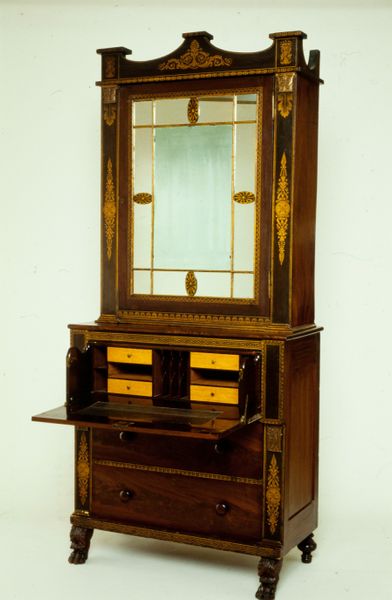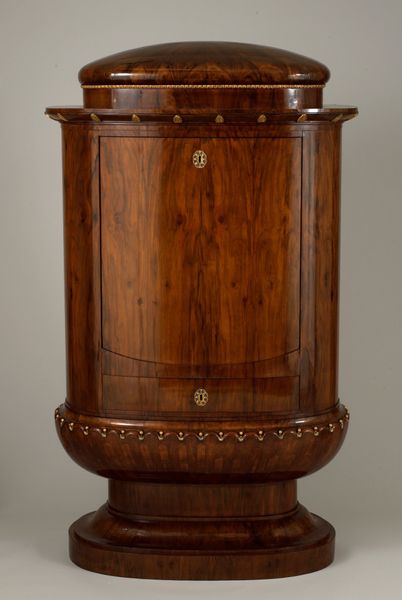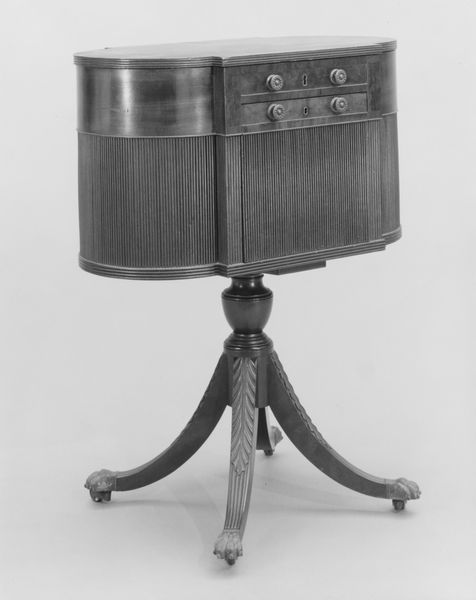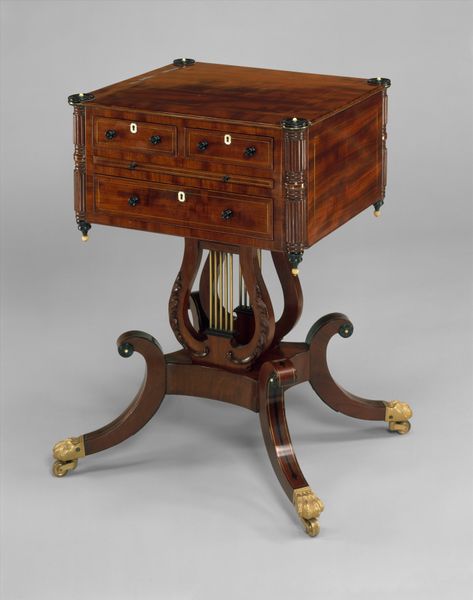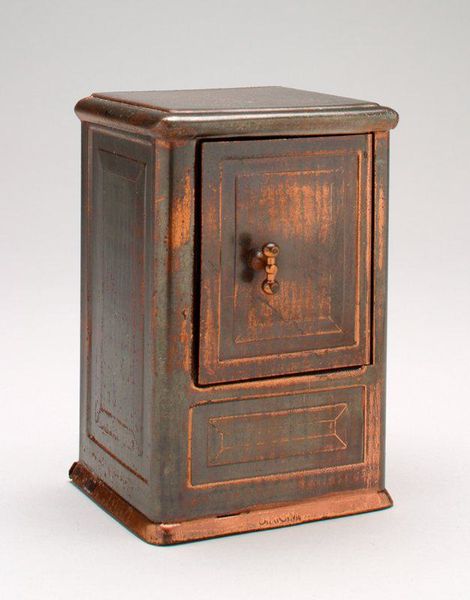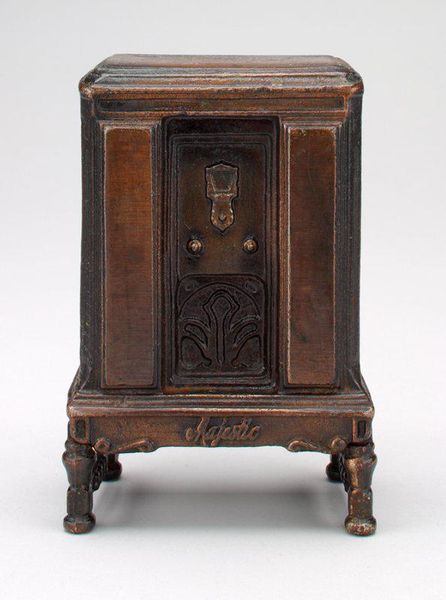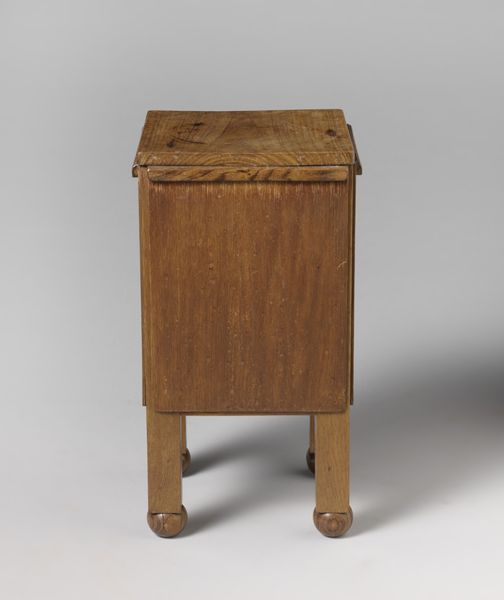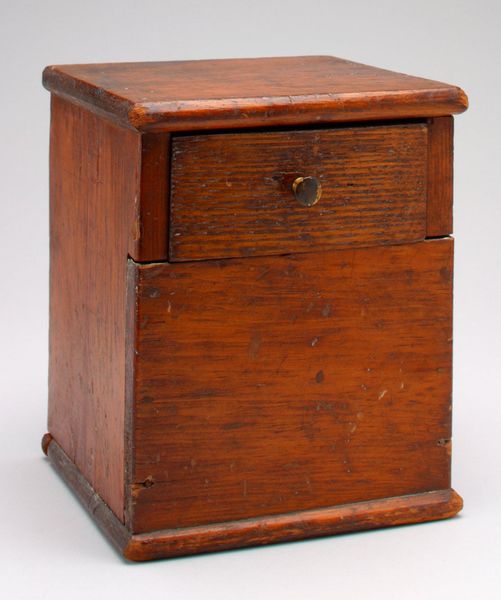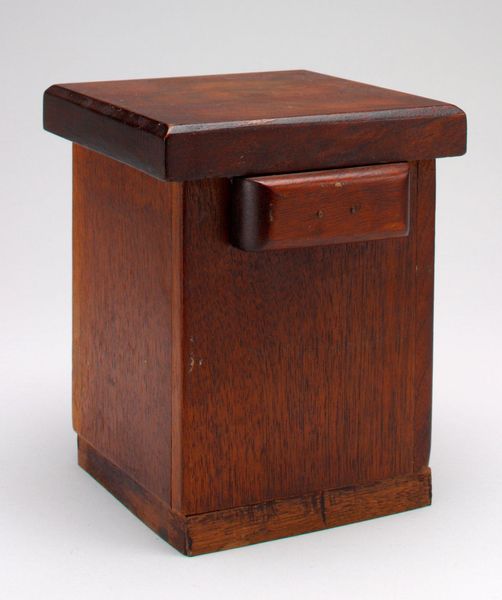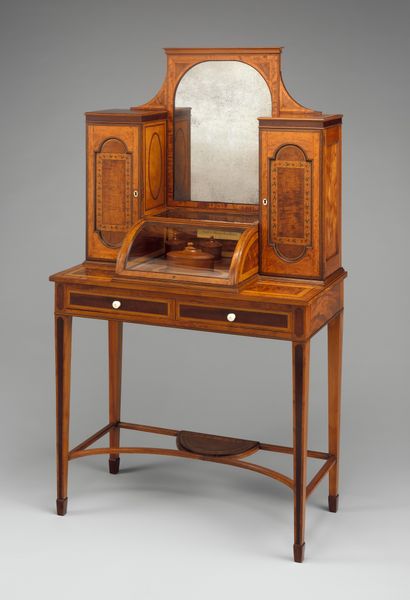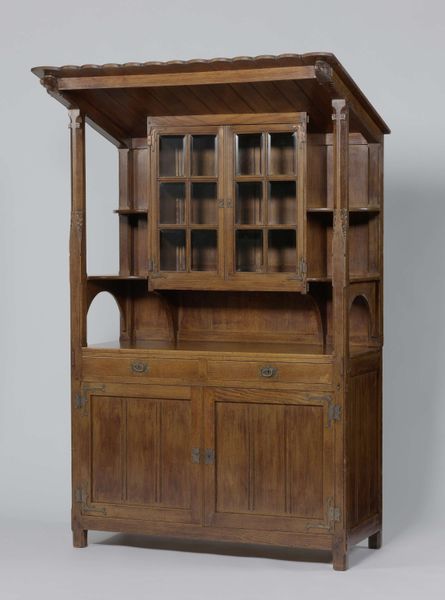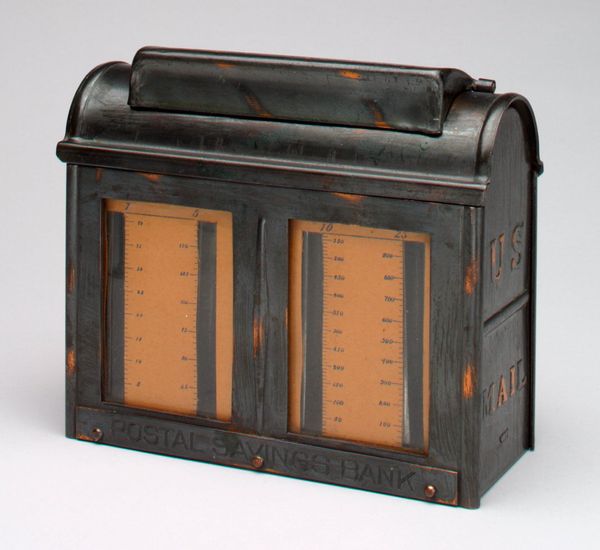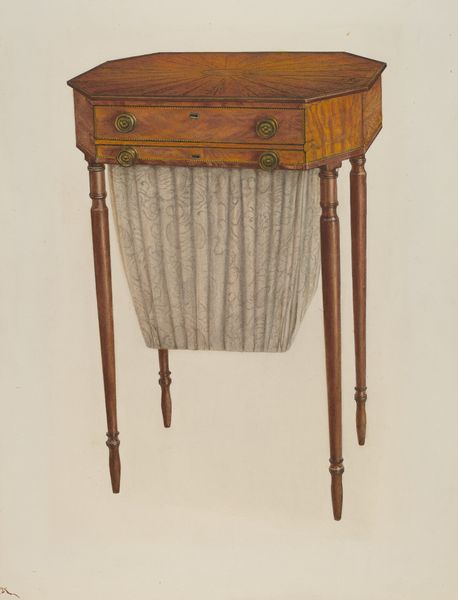
brass, metal, sculpture, wood
#
neoclacissism
#
brass
#
metal
#
sculpture
#
sculpture
#
wood
Dimensions: binnacle height 83.5 cm, binnacle width 44.5 cm, binnacle depth 41.8 cm, compass card diameter 23.2 cm, compass card box height 4.5 cm, compass card box width 25.6 cm, compass card box depth 25.6 cm
Copyright: Rijks Museum: Open Domain
Curator: We're looking at a fascinating piece titled "Compass in binnacle," crafted in 1819 by George Stebbing. The work combines brass, other metals and wood into a singular functional sculpture. Editor: My first thought is...intricate. Almost like a miniature temple. The use of geometric forms, particularly the triangular hood, creates a rather formal impression. Curator: Indeed. Let's consider the structure: the eye is drawn to the upward-pointing triangular prism. A shape loaded with symbolic direction and stability. Editor: Absolutely, direction being the key concept here, and stability is critical for maritime navigation. This compass isn't merely an instrument; it's a promise of safe passage, a ward against the unknown perils of the sea. Notice the solid base, ensuring the vessel itself stays on course, literally and figuratively. Curator: And consider the materials themselves. The polished wood and gleaming brass lend a sense of importance to its function, doesn't it? Each element clearly defined, and working in conjunction to form a cohesive and highly organized aesthetic object. Editor: It’s a world unto itself, miniaturized and self-contained. Within its heart lies the magnetic compass, an icon of guidance. It makes you think about trade, exploration and cultural interchange of the era. The very act of traveling is rife with emotional meaning: hope and also potential disaster. Curator: You’ve hit on something essential. It’s a beautifully concise exploration of utility and a decorative exploration of form. Editor: Seeing it now I also appreciate the quiet nature of its visual narrative. There is a stoicism about its nature that represents an unwavering intention. What do you think? Curator: Yes, precisely, and from a design standpoint the integration is so sophisticated, it truly is sculpture. Well, I see it in a completely different way after that conversation. Thank you. Editor: My pleasure, thank you. These are the discussions which unlock even greater ideas within our own perspective of seeing and interpreting.
Comments
rijksmuseum about 2 years ago
⋮
The ship’s compass was used to determine the course of a vessel and was thus the most important instrument on board. At night it could be safely kept in this binnacle (in Dutch nachthuis or ‘night house’). A small built-in lamp made it possible to read the compass in the dark.
Join the conversation
Join millions of artists and users on Artera today and experience the ultimate creative platform.
